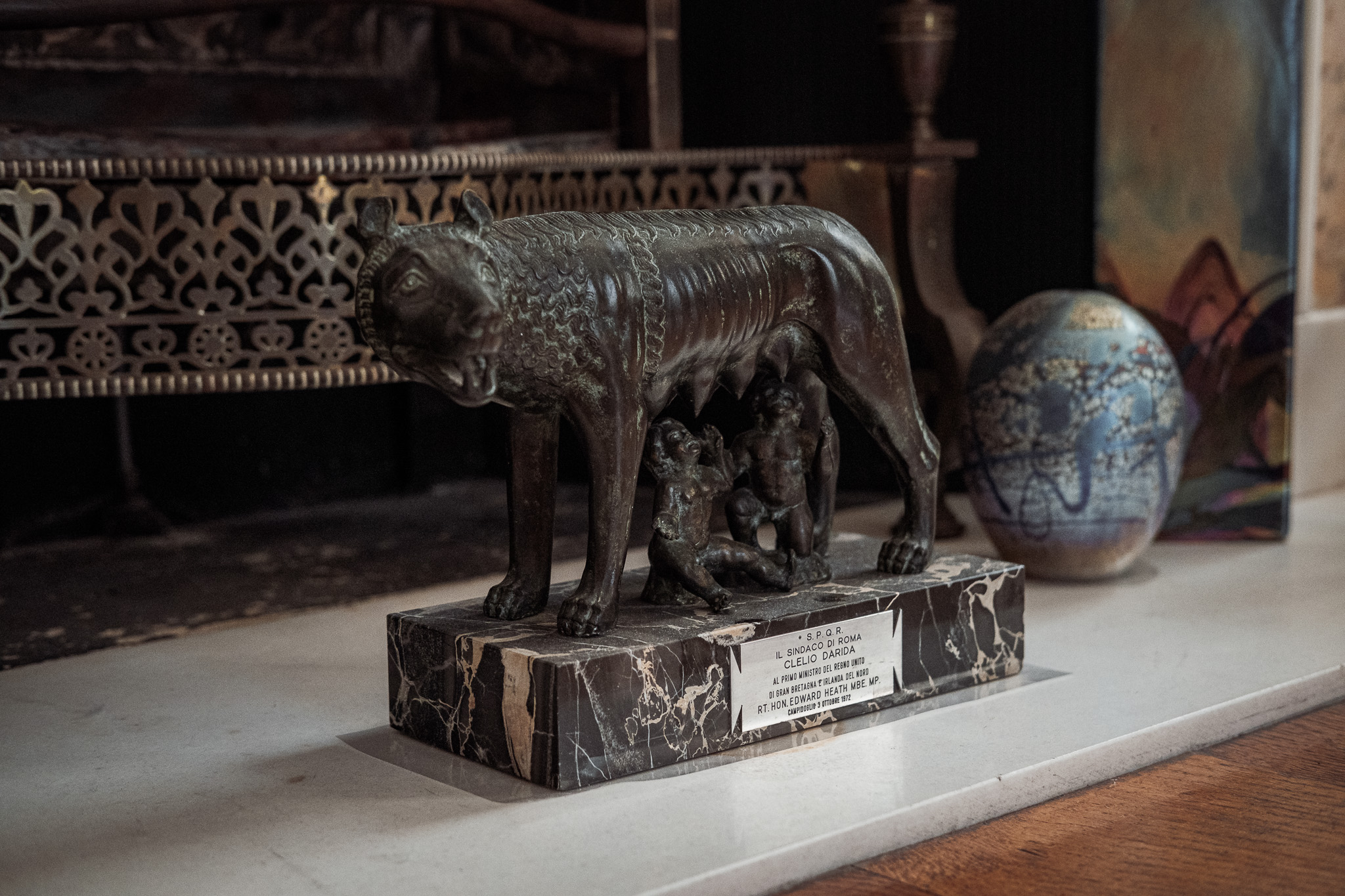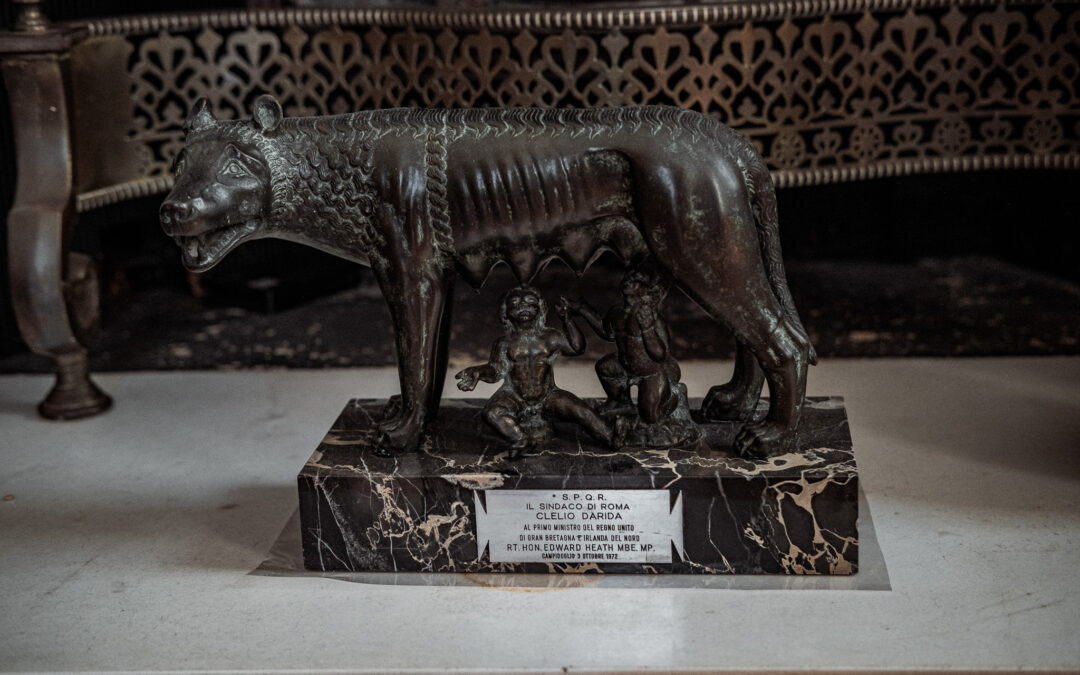According to Roman historian Livy, Romulus and Remus have been seen in bronze alongside their she-wolf saviour as long ago as 295 BC when a statue of the trio was erected at the foot of the Palatine Hill. This image of the infant founders of Rome has persisted for many years since, and replicas can be seen in many places worldwide – Italy, Japan, Russia, Uruguay, the United States, to name a few locations – so it is hardly surprising that one stands on the hearth in Arundells’ library.

This particular replica of the Capitoline Wolf statue was gifted to Prime Minister Edward Heath on October 3rd, 1972, by the then-Mayor of Rome, Clelio Darida, which is said on its plate. Many statues have been donated for at least a century: King Vittorio Emmanuelle III donated one to Buenos Aires in 1910, Mussolini sent replicas to American cities in the interwar years, and a statue was donated to the newly founded Brasilia in 1960.

Mythology played a significant part in the lives of ancient Romans, and it continues to have a role today; although the Capitoline Wolf’s creator is unknown and its creation date debated, what the statue represents has made it a famous symbol of the city of Rome. Giving away images of such an integral part of Rome’s identity is a clear symbol of the desire to establish political connections and maintain cultural links to other civilisations, which can be seen with Arundells’ replica.
Guest post by Charlotte Davies, student, South Wilts Grammar School


